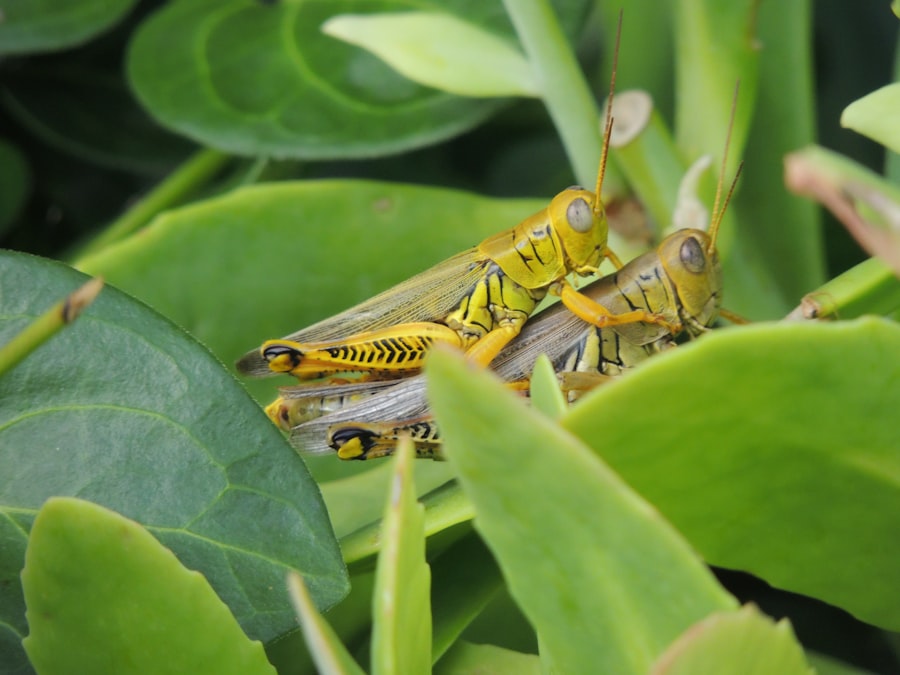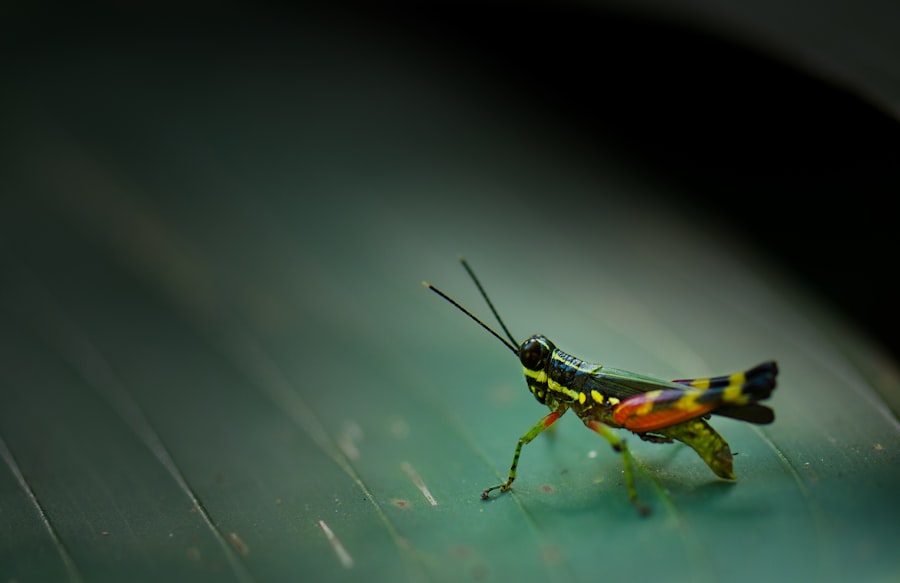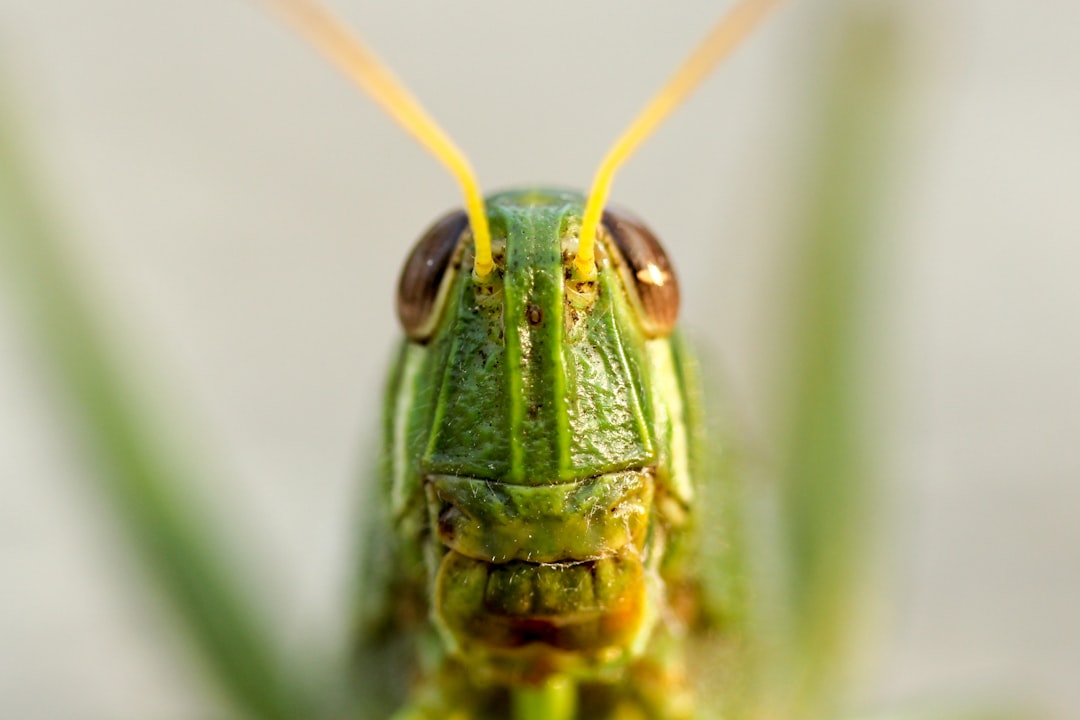Grass bugs, often referred to as lawn or turf pests, encompass a variety of species that can wreak havoc on lawns and grassy areas. Among the most common types are the chinch bug, billbug, and sod webworm. Each of these pests has distinct characteristics that can help homeowners and landscapers identify them.
For instance, chinch bugs are small, measuring about 1/6 inch in length, and are typically black with white wings that fold over their backs. They are often found in sunny areas of the lawn, where they feed on the grass blades, causing yellowing and wilting. Billbugs, on the other hand, are identifiable by their elongated snouts and can be found in both adult and larval stages.
Adult billbugs are about 1/4 inch long and have a hard shell that is usually gray or brown. The larvae, which are white and C-shaped, can be found beneath the surface of the soil, feeding on the roots of grass plants. Sod webworms are another common pest, characterized by their caterpillar stage, which can be green or brown with a distinctive pattern.
They create small silk webs in the grass as they feed, making them easier to spot during a lawn inspection. Recognizing these pests early is crucial for effective management and prevention.
Key Takeaways
- Grass bugs can be identified by their small size, elongated bodies, and piercing-sucking mouthparts.
- Grass bugs can cause damage to lawns by sucking sap from grass blades, resulting in yellowing, stunted growth, and potential death of the grass.
- Natural and organic control methods for grass bugs include introducing beneficial insects, using neem oil, and maintaining a healthy lawn through proper watering and fertilization.
- Chemical control options for grass bugs include insecticidal soaps, botanical insecticides, and synthetic chemical insecticides, but should be used as a last resort.
- Maintaining a healthy lawn through proper watering, mowing, and fertilization can help prevent grass bug infestations and promote grass resilience.
Understanding the Damage They Cause
The damage caused by grass bugs can vary significantly depending on the species and the extent of the infestation. Chinch bugs are notorious for their ability to cause rapid damage to lawns, particularly during hot and dry weather conditions. They feed by piercing the grass blades and sucking out the sap, leading to a condition known as “flagging,” where patches of grass turn yellow or brown and eventually die off.
This not only affects the aesthetic appeal of a lawn but can also lead to more severe issues if left untreated. Billbugs primarily damage grass by feeding on the roots and stems, which can result in thinning turf and dead patches. The presence of billbug larvae can be particularly detrimental as they burrow into the soil, making it difficult for grass to absorb nutrients and water effectively.
Sod webworms contribute to lawn damage by chewing through grass blades, creating irregular patches that can quickly spread if not addressed. Understanding the specific type of damage associated with each pest is essential for implementing appropriate control measures.
Natural and Organic Control Methods

For those seeking environmentally friendly solutions to manage grass bug infestations, several natural and organic control methods can be effective. One popular approach is introducing beneficial insects into the lawn ecosystem. Predatory insects such as ladybugs and lacewings can help keep pest populations in check by preying on grass bugs and their larvae.
Additionally, nematodes—microscopic worms that target soil-dwelling pests—can be applied to infested areas to reduce billbug larvae populations. Another organic method involves using insecticidal soaps or neem oil sprays, which can disrupt the life cycle of grass bugs without harming beneficial insects. These products work by suffocating pests or interfering with their hormonal systems, preventing them from maturing into adults.
Regularly applying these treatments during peak pest activity can significantly reduce infestations while maintaining a healthy lawn environment.
Chemical Control Options
| Chemical Control Options | Effectiveness | Cost | Environmental Impact |
|---|---|---|---|
| Herbicides | High | Medium | Low |
| Insecticides | High | High | Medium |
| Fungicides | High | High | Medium |
While natural methods are effective for many homeowners, some may find that chemical control options are necessary for severe infestations. There are various insecticides available that target specific grass bugs while minimizing harm to non-target organisms. For instance, pyrethroids are commonly used against chinch bugs due to their quick knockdown effect.
These synthetic chemicals work by disrupting the nervous system of insects upon contact. When considering chemical control, it is crucial to follow label instructions carefully to ensure safe application and minimize environmental impact. Additionally, timing is essential; applying insecticides during the early stages of an infestation can yield better results than waiting until damage is widespread.
Integrated Pest Management (IPM) strategies often recommend combining chemical treatments with cultural practices to enhance effectiveness while reducing reliance on chemicals over time.
Maintaining a Healthy Lawn to Prevent Grass Bug Infestations
Preventing grass bug infestations begins with maintaining a healthy lawn that can withstand pest pressures. A well-nourished lawn is more resilient against pests and diseases, making it less likely for infestations to take hold. Regularly aerating the soil helps improve root health by allowing better water and nutrient absorption.
This practice also reduces compaction, which can create favorable conditions for pests like billbugs. Proper watering practices play a significant role in lawn health as well. Overwatering can lead to shallow root systems and increased vulnerability to pests, while underwatering stresses the grass and makes it more susceptible to damage from insects.
Implementing a consistent watering schedule that allows for deep soaking encourages robust root growth and overall lawn vitality. Additionally, mowing at the appropriate height—generally around 2.5 to 3 inches for most grasses—can help shade the soil and reduce heat stress, further deterring grass bug infestations.
Effective Lawn Care Practices

Fertilization: A Delicate Balance
Fertilization plays a critical role in promoting healthy growth; however, it is important to use fertilizers judiciously. Over-fertilizing can lead to excessive growth that attracts pests while also creating an imbalance in soil nutrients.
Soil Testing and Overseeding
A soil test can provide valuable insights into nutrient deficiencies and help guide fertilization efforts. Regularly overseeding your lawn can also bolster its defenses against pests by promoting dense turf growth. A thick lawn is less inviting to grass bugs as it provides less opportunity for them to establish themselves.
Crop Rotation for Sustainable Pest Management
Additionally, practicing crop rotation with different grass varieties can disrupt pest life cycles and reduce their populations over time. Implementing these practices not only enhances lawn health but also contributes to a more sustainable approach to pest management.
Seeking Professional Help
For homeowners facing persistent grass bug issues or those who lack the time or expertise to manage infestations effectively, seeking professional help may be the best course of action. Lawn care professionals possess specialized knowledge about pest identification, treatment options, and integrated pest management strategies tailored to specific situations. They can conduct thorough inspections to determine the extent of an infestation and recommend appropriate treatments based on their findings.
Moreover, professionals often have access to advanced tools and products that may not be available to the average homeowner. This expertise can lead to more effective pest control outcomes while minimizing potential harm to beneficial organisms in the ecosystem. Engaging with a reputable lawn care service ensures that treatments are applied safely and effectively, providing peace of mind for homeowners concerned about maintaining a healthy lawn.
Long-Term Strategies for Grass Bug Management
Implementing long-term strategies for managing grass bugs involves a combination of proactive measures and ongoing monitoring. Establishing a routine inspection schedule allows homeowners to catch early signs of infestation before they escalate into larger problems.
Additionally, fostering biodiversity within the lawn ecosystem can enhance resilience against grass bugs. Planting native flowers or shrubs alongside grassy areas attracts beneficial insects that prey on pests while providing habitat diversity that supports overall ecosystem health. By creating a balanced environment where natural predators thrive, homeowners can reduce reliance on chemical treatments over time.
In conclusion, managing grass bug infestations requires a multifaceted approach that combines identification, understanding of damage, natural control methods, chemical options when necessary, and ongoing maintenance practices. By prioritizing lawn health and implementing effective strategies, homeowners can create an environment that minimizes pest pressures while promoting vibrant and resilient landscapes.
If you are interested in learning more about insects that can affect fruits and vegetables, you may want to check out the article “Fruits and Vegetables: A Latest News”.
FAQs
What are grass bugs?
Grass bugs are small insects that belong to the family Miridae. They are commonly found in grassy areas and are known for feeding on the sap of grass and other plants.
What do grass bugs look like?
Grass bugs are typically small, ranging from 3 to 10 millimeters in length. They have elongated bodies and often have green or brown coloration, which helps them blend in with their grassy habitats.
What do grass bugs eat?
Grass bugs primarily feed on the sap of grass and other plants. They use their piercing-sucking mouthparts to extract the sap, which can sometimes result in damage to the plants.
Are grass bugs harmful to plants?
While grass bugs can cause damage to plants by feeding on their sap, they are generally not considered to be major pests. In large numbers, they may cause some cosmetic damage to lawns and ornamental grasses, but they are not typically a significant threat to plant health.
How can grass bugs be controlled?
If grass bugs are causing significant damage to plants, they can be controlled using insecticidal soaps or botanical insecticides. However, it is important to consider the potential impact on beneficial insects and the environment before using chemical control methods.
Are grass bugs harmful to humans?
Grass bugs are not harmful to humans. They do not bite or sting, and they are not known to transmit any diseases. In general, they are considered to be harmless to humans and pets.
























+ There are no comments
Add yours